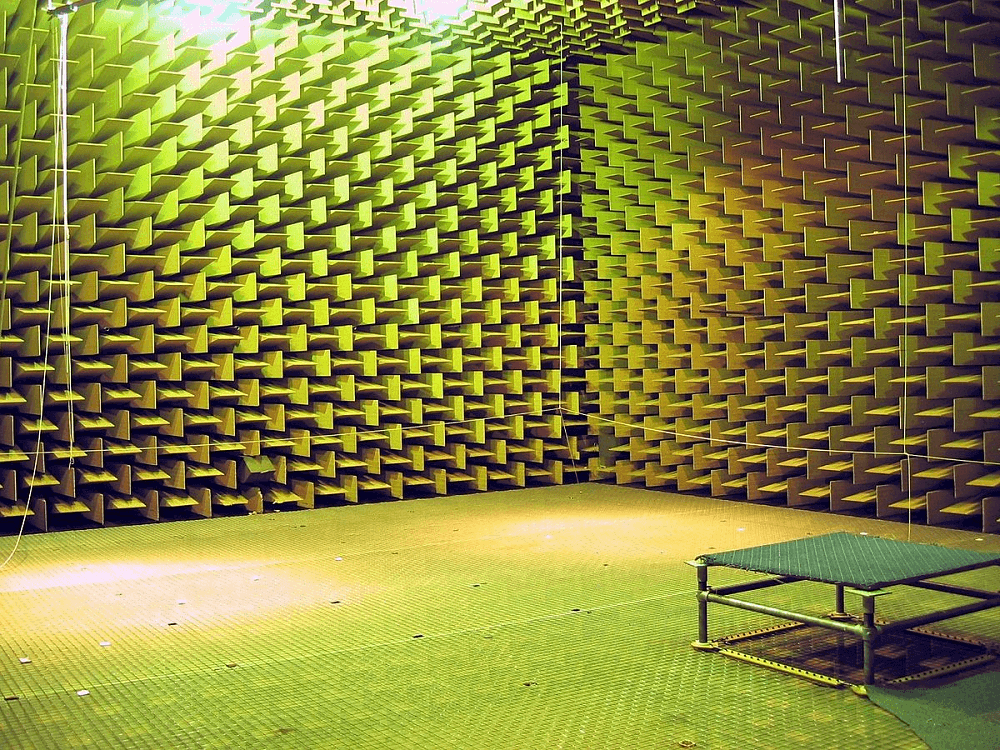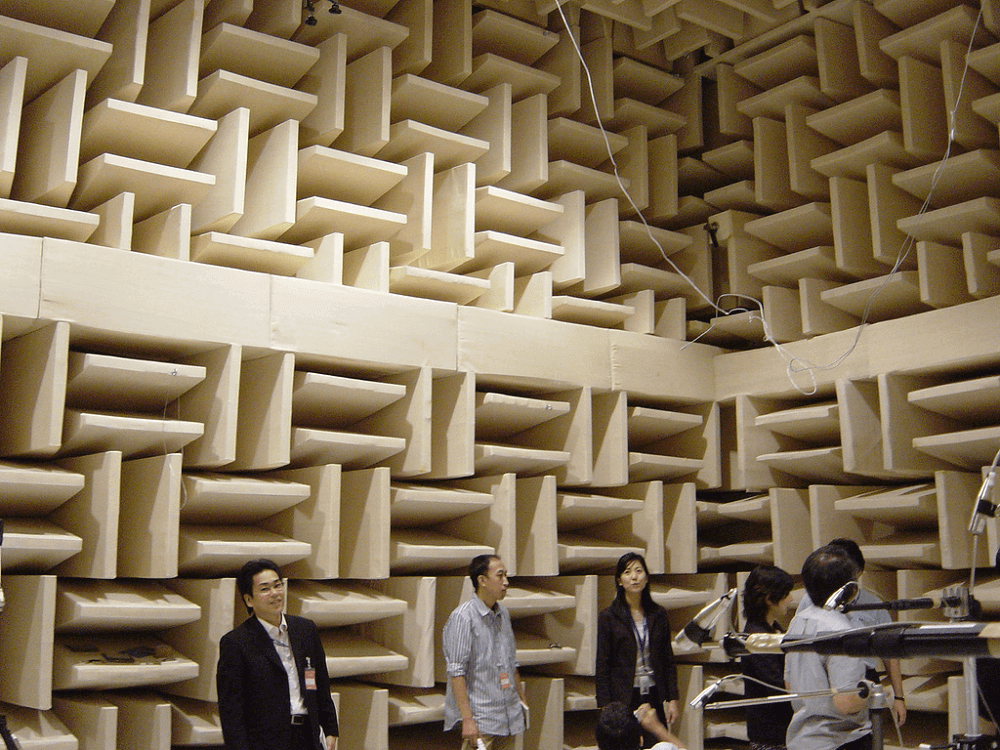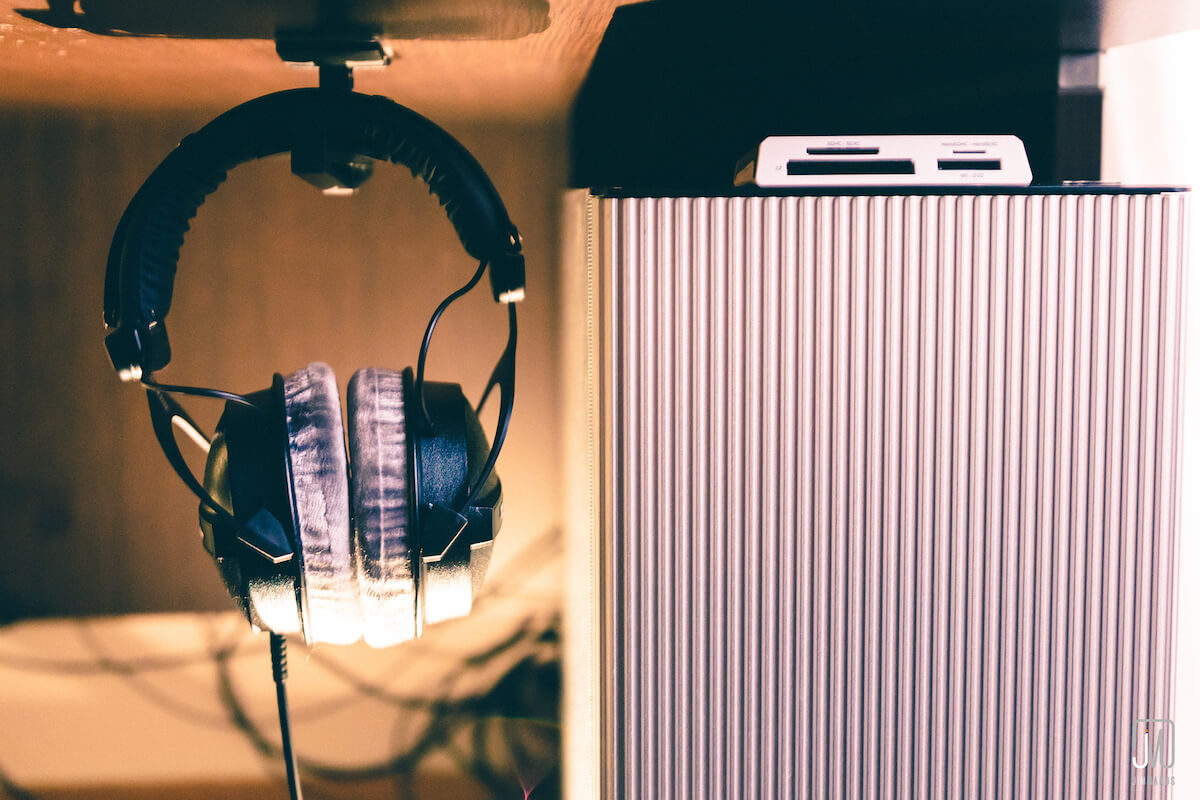“Enjoying the silence”: what are the pros and cons of the quietest places on the planet
Household noise surrounding us can be harmful to the body. Therefore, it is not surprising that people are ready to go for all sorts of tricks in search of "silence" - to buy special devices , sleep in noise-canceling headphones, and even change their place of residence. Today we analyze what effect on the body has a complete lack of noise, and where it can be experienced.

Photo of Arnaud Dessein / CC
Trevor Cox’s The Sound Book (Travor Cox) provides the story of Stuart Bradley, a researcher at the University of Auckland, about his experience of visiting Antarctica. In it, Bradley shares his impressions of what he heard: “Sitting on the slope, I could not make out a single sound, except the beating of my heart. There is not a soul other than me. No foliage sounds, no sound of water or wind. I was struck by the original silence. "
')
When we talk about the “quietest” places, we mean the human perception of sound. Although in reality, using sophisticated devices, you can “hear” what is happening far beyond the borders of our planet.

Photo skeeze / CC
The so-called “ square inches of silence ” is counted among the places of the conditional “ideal silence” on the planet. One of them is located in Olympic National Park, Washington.
He was discovered by acoustic ecologist Gordon Hempton. He conducted a large study on a national scale (USA), and as the main criterion for "silence" he considered the absence of any sounds of anthropogenic origin (for example, the noise from flying aircraft). This is how “the quietest square inch” sounds - the recording was made by Hampton himself.
You can feel the complete absence of any sounds in the anechoic chamber . There, a person hears only sounds that come directly from the source, if there is one.
Such rooms can safely be considered the quietest places on Earth. The Microsoft anechoic chamber has the status confirmed by the Guinness Book of Records Committee: the background noise level here is -20.6 dB (for comparison: the ticking of the clock is 30 dB).

Photo Yamato IBM research center / CC
One of the first premises of this type was built in 1940. It conducted work on psychoacoustics, tested the speakers and microphones, imitated the propagation of sound in the concert hall. Anechoic chambers are still in service, and the range of tasks for them is only expanding. For example, most Microsoft products since 2015, including Surface, X-box and Hololens, have been tested in an anechoic chamber. In such conditions, are tested antennas, industrial equipment and aviation technology.
A person who is inside an anechoic chamber, is faced with the absence of other sounds that is unattainable in other conditions. There is a myth that it is impossible to stay in such a room for more than 45 minutes - after this time the visitor of the anechoic chamber will be completely disoriented and will begin to hallucinate. Enthusiasts from the Veritasium project destroyed this myth — the subject stayed in the cell for an hour in complete darkness. According to him, he could stay indoors longer.

Photo by Yury Bulka / CC
Psychologist Peter Suedfeld (Peter Suedfeld), who studied sensory deprivation , compares the sensations of falling into an anechoic chamber with how a person adapts to darkness or bright light. In an anechoic chamber, you can really hear unusual sounds: from pulsating arteries to the movement of joints. Usually this noise is masked by external factors, but not in anechoic chambers. Some people complain about the frightening sounds of their own bodies, being in noise-canceling headphones - in rooms without an echo, this effect is amplified many times.
One of the visitors to the anechoic chamber claims that within five minutes of being in complete silence, he suddenly heard a swarm of bees and the song Fleetwood Mac , and after that other sounds of unknown origin. Auditory hallucinations can actually visit people isolated from familiar sounds and light. This is confirmed by the experiments of sensory deprivation, they view the "ideal" silence rather from a negative point of view.
There is an alternative interpretation of the results of such experiments. She says that hallucinations can be caused not by the fact of sensory deprivation, but by the conditions of the study: the presence of an alarm button or medical staff. This environment is conducive to excitement and can be the cause of the appearance of auditory hallucinations or the aggravation of existing complications (physical or neurological hearing impairment).
In 2013, the United States conducted an experiment to find out how different sounds affect the development of the brain of adult mice. The experimental groups were divided into four groups: one included music, the second - white noise, the third - a squeak of mice, the fourth were in complete silence. The study showed that two hours of silence per day lead to the development of cells in the hippocampus, a brain area associated with the formation of emotions and memory.
Another study points to the association of silence with a reduction in stress levels. During the experiment, the subjects listened to music tracks that were interrupted by two-minute pauses. It turned out that silence more effectively “relaxes” the brain than the melodies intended for it. Even a short piece of music causes a state of excitement or focused attention. A pause soothes the listener, allows you to relax.
Some teams pay special attention to working in silence. The startup team Milanote even introduced the so-called “quiet time” into its schedule. The team members not only fall silent and stop communicating with each other, but also cease correspondence in Slack - they focus on work. According to the head of the company, this helped to increase the productivity of the team by 23% in terms of the speed of completing tasks.

Photo by Jim Makos / CC
On the topic of the relationship of productivity and background sounds in the workplace there is a classic study conducted in the 60s at Cornell University among computer science students. They were divided into two groups: one worked in silence, the other with music. The study showed that both groups performed their tasks with the same speed and accuracy. However, all the mathematical operations performed by the students had one feature: the output data coincided with the input data. That is, the subjects performed a set of actions to find the original result, which all this time was in front of them. Most of the students who noticed this worked in silence. This indicates a concentration relationship with background noise.
“Absolute silence” is a matter of human perception of the environment. Someone may find her in a secluded park, and someone will have to go for her in an anechoic chamber. In its “extreme” manifestations, silence can “shake” our perception of reality for some time and even cause auditory hallucinations. But there is every reason to believe that work and rest in "moderate" silence can be more productive.
Materials for additional reading from the "Hi-Fi World":

Photo of Arnaud Dessein / CC
The quietest places on the planet
Trevor Cox’s The Sound Book (Travor Cox) provides the story of Stuart Bradley, a researcher at the University of Auckland, about his experience of visiting Antarctica. In it, Bradley shares his impressions of what he heard: “Sitting on the slope, I could not make out a single sound, except the beating of my heart. There is not a soul other than me. No foliage sounds, no sound of water or wind. I was struck by the original silence. "
')
When we talk about the “quietest” places, we mean the human perception of sound. Although in reality, using sophisticated devices, you can “hear” what is happening far beyond the borders of our planet.

Photo skeeze / CC
The so-called “ square inches of silence ” is counted among the places of the conditional “ideal silence” on the planet. One of them is located in Olympic National Park, Washington.
He was discovered by acoustic ecologist Gordon Hempton. He conducted a large study on a national scale (USA), and as the main criterion for "silence" he considered the absence of any sounds of anthropogenic origin (for example, the noise from flying aircraft). This is how “the quietest square inch” sounds - the recording was made by Hampton himself.
You can feel the complete absence of any sounds in the anechoic chamber . There, a person hears only sounds that come directly from the source, if there is one.
Such rooms can safely be considered the quietest places on Earth. The Microsoft anechoic chamber has the status confirmed by the Guinness Book of Records Committee: the background noise level here is -20.6 dB (for comparison: the ticking of the clock is 30 dB).

Photo Yamato IBM research center / CC
One of the first premises of this type was built in 1940. It conducted work on psychoacoustics, tested the speakers and microphones, imitated the propagation of sound in the concert hall. Anechoic chambers are still in service, and the range of tasks for them is only expanding. For example, most Microsoft products since 2015, including Surface, X-box and Hololens, have been tested in an anechoic chamber. In such conditions, are tested antennas, industrial equipment and aviation technology.
Is silence dangerous?
A person who is inside an anechoic chamber, is faced with the absence of other sounds that is unattainable in other conditions. There is a myth that it is impossible to stay in such a room for more than 45 minutes - after this time the visitor of the anechoic chamber will be completely disoriented and will begin to hallucinate. Enthusiasts from the Veritasium project destroyed this myth — the subject stayed in the cell for an hour in complete darkness. According to him, he could stay indoors longer.

Photo by Yury Bulka / CC
Psychologist Peter Suedfeld (Peter Suedfeld), who studied sensory deprivation , compares the sensations of falling into an anechoic chamber with how a person adapts to darkness or bright light. In an anechoic chamber, you can really hear unusual sounds: from pulsating arteries to the movement of joints. Usually this noise is masked by external factors, but not in anechoic chambers. Some people complain about the frightening sounds of their own bodies, being in noise-canceling headphones - in rooms without an echo, this effect is amplified many times.
One of the visitors to the anechoic chamber claims that within five minutes of being in complete silence, he suddenly heard a swarm of bees and the song Fleetwood Mac , and after that other sounds of unknown origin. Auditory hallucinations can actually visit people isolated from familiar sounds and light. This is confirmed by the experiments of sensory deprivation, they view the "ideal" silence rather from a negative point of view.
There is an alternative interpretation of the results of such experiments. She says that hallucinations can be caused not by the fact of sensory deprivation, but by the conditions of the study: the presence of an alarm button or medical staff. This environment is conducive to excitement and can be the cause of the appearance of auditory hallucinations or the aggravation of existing complications (physical or neurological hearing impairment).
Where do you need silence
In 2013, the United States conducted an experiment to find out how different sounds affect the development of the brain of adult mice. The experimental groups were divided into four groups: one included music, the second - white noise, the third - a squeak of mice, the fourth were in complete silence. The study showed that two hours of silence per day lead to the development of cells in the hippocampus, a brain area associated with the formation of emotions and memory.
Another study points to the association of silence with a reduction in stress levels. During the experiment, the subjects listened to music tracks that were interrupted by two-minute pauses. It turned out that silence more effectively “relaxes” the brain than the melodies intended for it. Even a short piece of music causes a state of excitement or focused attention. A pause soothes the listener, allows you to relax.
Some teams pay special attention to working in silence. The startup team Milanote even introduced the so-called “quiet time” into its schedule. The team members not only fall silent and stop communicating with each other, but also cease correspondence in Slack - they focus on work. According to the head of the company, this helped to increase the productivity of the team by 23% in terms of the speed of completing tasks.

Photo by Jim Makos / CC
On the topic of the relationship of productivity and background sounds in the workplace there is a classic study conducted in the 60s at Cornell University among computer science students. They were divided into two groups: one worked in silence, the other with music. The study showed that both groups performed their tasks with the same speed and accuracy. However, all the mathematical operations performed by the students had one feature: the output data coincided with the input data. That is, the subjects performed a set of actions to find the original result, which all this time was in front of them. Most of the students who noticed this worked in silence. This indicates a concentration relationship with background noise.
“Absolute silence” is a matter of human perception of the environment. Someone may find her in a secluded park, and someone will have to go for her in an anechoic chamber. In its “extreme” manifestations, silence can “shake” our perception of reality for some time and even cause auditory hallucinations. But there is every reason to believe that work and rest in "moderate" silence can be more productive.
Materials for additional reading from the "Hi-Fi World":
- Sounds that annoy us: why it happens
- Audio triggers: how the human psyche reacts to different sounds
- "Despite age": how to protect hearing
- Sound from different sides: how it is perceived by representatives of different professions
- "They just hear us": how animals perceive sound
- "Hear past the ears": unusual ways of perceiving sound
- Room acoustics: foundation
Source: https://habr.com/ru/post/411065/
All Articles